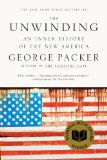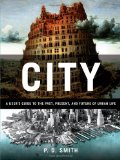Summary | Excerpt | Reading Guide | Reviews | Beyond the book | Read-Alikes | Genres & Themes | Author Bio

Americans in Paris
by David McCulloughThe Greater Journey is the enthralling, inspiring - and until now, untold - story of the adventurous American artists, writers, doctors, politicians, architects, and others of high aspiration who set off for Paris in the years between 1830 and 1900, ambitious to excel in their work.
Rated Runner Up Best Book of 2011 by BookBrowse Members
The Greater Journey is the enthralling, inspiring - and until now, untold - story of the adventurous American artists, writers, doctors, politicians, architects, and others of high aspiration who set off for Paris in the years between 1830 and 1900, ambitious to excel in their work.
After risking the hazardous journey across the Atlantic, these Americans embarked on a greater journey in the City of Light. Most had never left home, never experienced a different culture. None had any guarantee of success. That they achieved so much for themselves and their country profoundly altered American history. As David McCullough writes, "Not all pioneers went west." Elizabeth Blackwell, the first female doctor in America, was one of this intrepid band. Another was Charles Sumner, who enrolled at the Sorbonne because of a burning desire to know more about everything. There he saw black students with the same ambition he had, and when he returned home, he would become the most powerful, unyielding voice for abolition in the U.S. Senate, almost at the cost of his life.
Two staunch friends, James Fenimore Cooper and Samuel F. B. Morse, worked unrelentingly every day in Paris, Cooper writing and Morse painting what would be his masterpiece. From something he saw in France, Morse would also bring home his momentous idea for the telegraph.
Pianist Louis Moreau Gottschalk from New Orleans launched his spectacular career performing in Paris at age 15. George P. A. Healy, who had almost no money and little education, took the gamble of a lifetime and with no prospects whatsoever in Paris became one of the most celebrated portrait painters of the day. His subjects included Abraham Lincoln.
Medical student Oliver Wendell Holmes wrote home of his toil and the exhilaration in "being at the center of things" in what was then the medical capital of the world. From all they learned in Paris, Holmes and his fellow "medicals" were to exert lasting influence on the profession of medicine in the United States.
Writers Ralph Waldo Emerson, Nathaniel Hawthorne, Mark Twain, and Henry James were all "discovering" Paris, marveling at the treasures in the Louvre, or out with the Sunday throngs strolling the city's boulevards and gardens. "At last I have come into a dreamland," wrote Harriet Beecher Stowe, seeking escape from the notoriety Uncle Tom's Cabin had brought her. Almost forgotten today, the heroic American ambassador Elihu Washburne bravely remained at his post through the Franco-Prussian War, the long Siege of Paris and even more atrocious nightmare of the Commune. His vivid account in his diary of the starvation and suffering endured by the people of Paris (drawn on here for the first time) is one readers will never forget. The genius of sculptor Augustus Saint-Gaudens, the son of an immigrant shoemaker, and of painters Mary Cassatt and John Singer Sargent, three of the greatest American artists ever, would flourish in Paris, inspired by the examples of brilliant French masters, and by Paris itself.
Nearly all of these Americans, whatever their troubles learning French, their spells of homesickness, and their suffering in the raw cold winters by the Seine, spent many of the happiest days and nights of their lives in Paris. McCullough tells this sweeping, fascinating story with power and intimacy, bringing us into the lives of remarkable men and women who, in Saint-Gaudens's phrase, longed "to soar into the blue." The Greater Journey is itself a masterpiece.
The Greater Journey is a history of Paris-inspired life-changes... a record of the transformative moments that led to greatness and changed the world. Along the way McCullough celebrates the joy, freedom, and beauty Paris offered at that time; notes the loves, sorrows, losses, and important friendships Americans found there; and reminds us that between inspiration and fame came years of determined and good-old American hard work...continued
Full Review
 (588 words)
(588 words)
(Reviewed by Jo Perry).
No review can do justice to the range of McCullough's book, the number of intriguing Americans he chronicles, or the important works they produced. Notable, memorable, and especially moving are McCullough's accounts of George Catlin, painter of Native Americans, and the group of Iowans who visited Paris with him; of P.T. Barnum and Tom Thumb's triumphant visit; of Harriet Beecher Stowe's almost physical reaction to Gericault's The Raft of the Medusa in the Louvre; of Augustus Saint-Gaudens's rise from a poor apprentice to masterful creator of revolutionary sculptures; of John Singer Sargent's genius as a painter and the creation of his scandalous portrait of the alluring "Madame X".
 One of the most interesting figures among ...
One of the most interesting figures among ...

If you liked The Greater Journey, try these:

by George Packer
Published 2014
A riveting examination of a nation in crisis, from one of the finest political journalists of our generation.

by P.D. Smith
Published 2012
With erudite prose and carefully chosen illustrations, this unique work of metatourism explores what cities are and how they work. It covers history, customs and language, districts, transport, money, work, shops and markets, and tourist sites, creating a fantastically detailed portrait of the city through history and into the future.